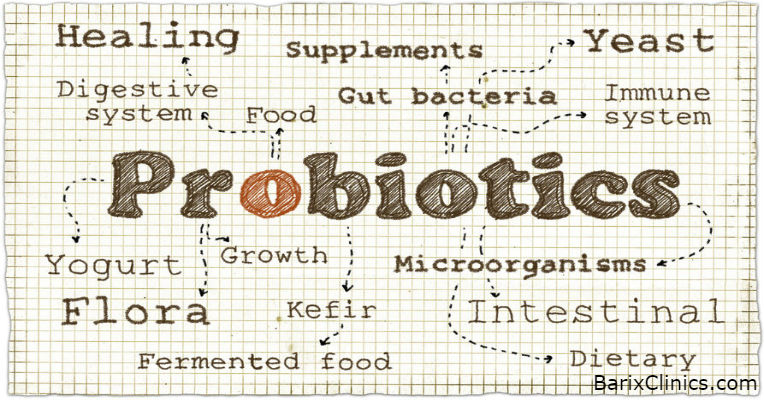The Dynamic Duo
Prebiotics and Probiotics
The gut microbiome—the population of bacteria (good and bad) in the intestines–is unique to each person. Your microbiome is influenced by the foods that you eat and can have an impact on your health and well-being. Increasing your intake of probiotics and prebiotics in the diet and through supplementation may favorably affect your health by altering the microbiome. Probiotics and prebiotics work together, the dynamic duo, to improve your gut health. Probiotics are the “good” bacteria that live in your intestine. Prebiotics are specialized plant fibers that feed probiotics and help them flourish. Quite a team!
| Learn More About the Dynamic Duo | |
| Probiotics | Prebiotics |
| Live beneficial bacteria that live in our intestines. | Specialized plant fiber that is food for the good bacteria that already live in our intestines. |
| There are many different strains of probiotics that naturally make up your gut microbiome—it is likely that not all of them have been identified. More familiar strains are Lactobacilli, Bifidobacteria, and Bacillus.
Probiotics are found in cultured products such as yogurt, kefir. kimchi, sauerkraut, miso, tempeh and soy beverages. | There are 3 main types of prebiotics: Oligosaccharides The non-starch polysaccharides inulin and fructo-oligosaccharides (also known as FOS) found in asparagus, leek, jicama, onions, banana, chicory root, dandelion root and garlic. Soluble Fiber Found in psyllium, flaxseeds, cucumber, celery, carrots, oats, apples, oranges, pears, legumes, beans and nuts. Resistant starch Found in grains, seeds, legumes, potatoes, green (unripe) bananas, and plantains.
|
| Sensitive to temperature, acidity and time. Probiotics in food and supplements may not survive the harsh stomach environment on route to the intestine. | Not affected by temperature acidity, time and the harsh stomach environment. |
| Studies are still underway, but potential benefits include improved gastrointestinal health, improved immunity, and perhaps even aid in weight loss | Studies are still underway, but prebiotics may improve gastrointestinal health, calcium absorption, and decrease stress and anxiety. |
| Consuming foods and or supplements may help to increase the number of specific strains of probiotics in the microbiome. As this area of study is relatively new, knowing which particular probiotic strain will most benefit a person is just a guess. | Helps to increase many different strains of probiotics—increasing the number of good bacteria and decreasing the number of bad bacteria in your microbiome. |
| You may not be able to eat enough probiotic-containing foods and may decide to take a probiotic supplement. If you do, be sure to choose a supplement that contain at least the three following bacteria superstars: § Lactobacillus acidophilus or L. Acidophilus § Bifidobacterium longum or B.longum § Bifidobacterium bifidum or B.bifidum Other important strains to look for: § Lactobacillus rhamnosus § Lactobacillus bulgaricus § Lactobacillus plantarum § Lactobacillus casei § Bifidobacterium breve
Nature’s Bounty Advanced or Ultra Strength Probiotic 10 is a robust probiotic supplement and contains the prebiotic inulin. | Increasing your intake of foods rich in prebiotics is your best bet since these foods are fiber-rich and have other health properties as well. Supplementation is not typically necessary. |
Download Healthful Tips: The Dynamic Duo, Prebiotics and Probiotics


